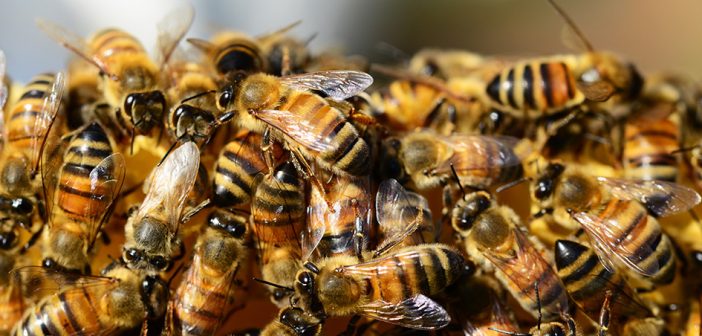Researchers at America’s University of Illinois at Urbana-Champaign have found that when given the choice, honey bee foragers prefer to collect sugar syrup laced with the fungicide chlorothalonil over sugar syrup alone.
“People assume that fungicides affect only fungi,” said University of Illinois entomology professor May Berenbaum, who led the new research. “But fungi are much more closely related to animals than they are to plants. And toxins that disrupt physiological processes in fungi can also potentially affect them in animals, including insects.”
To test whether foraging honey bees showed a preference for other chemicals they are likely to encounter in the wild, two feeding stations were set up in large enclosure. Foraging honey bees could fly freely from one feeder to the other, choosing to collect either sugar syrup laced with a test chemical or sugar syrup mixed with a solvent as the control.
Over the course of the study honey bees preferred the naturally occurring chemical quercetin, which is found in pollen and nectar, over controls at all concentrations tested. The bees also preferred sugar syrup laced with glyphosate at 10 parts per billion, but not at higher concentrations. While the bees actively avoided syrup containing the fungicide prochloraz, they showed a mild preference for sugar syrup laced with chlorothalonil at 0.5 and 50 parts per billion, but not at 500 ppb.
“The dose determines the poison,” Berenbaum added. “If your ability to metabolize poisons is compromised, then a therapeutic dose can become a toxic dose. And that seems to be what happens when honey bees encounter multiple pesticides.”

Photo Credit: Pexels
The post Agricultural fungicide attracts honey bees appeared first on Hort News.